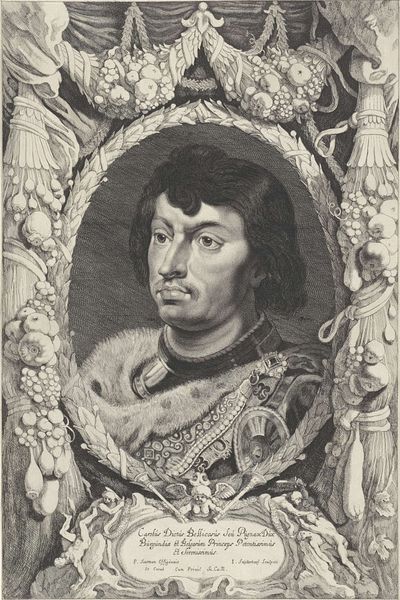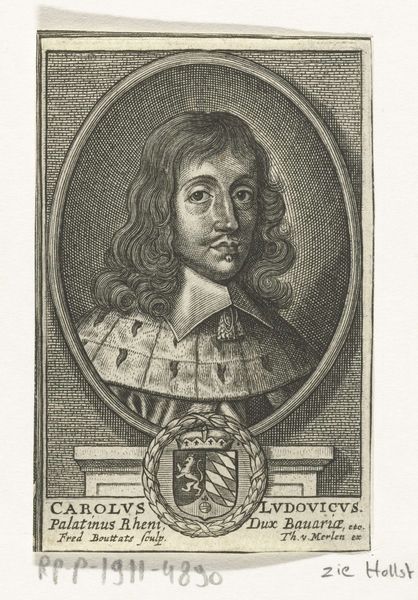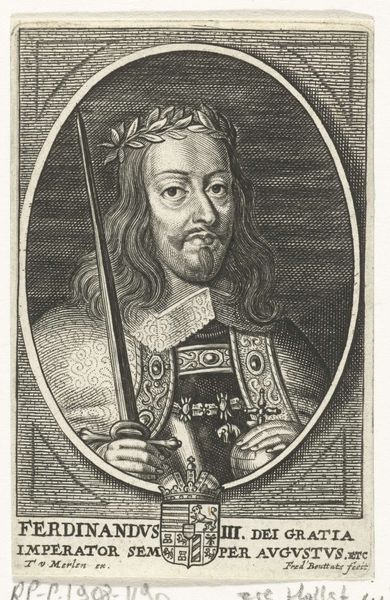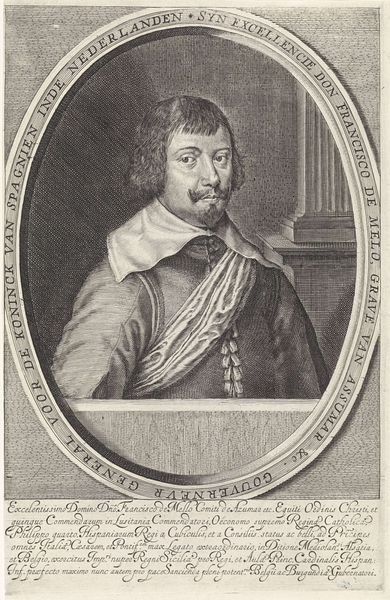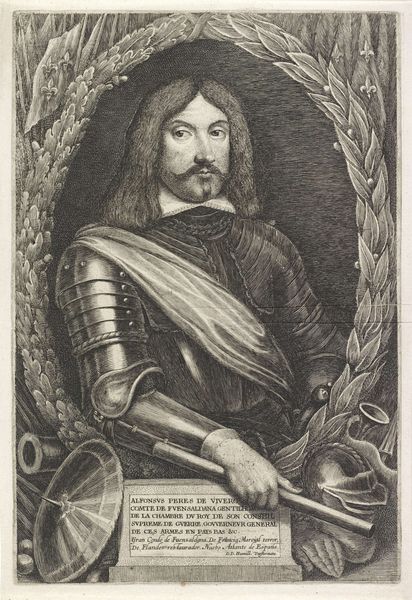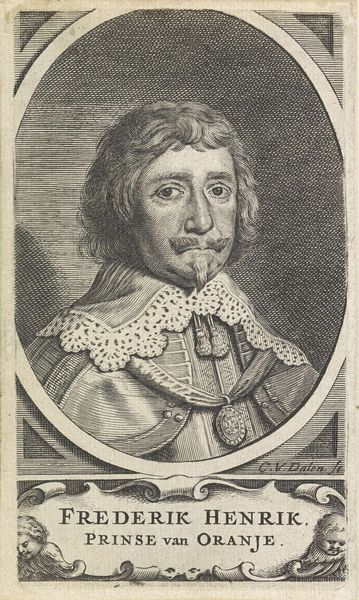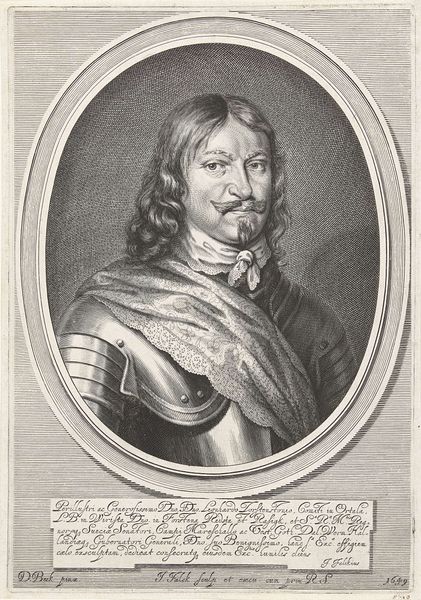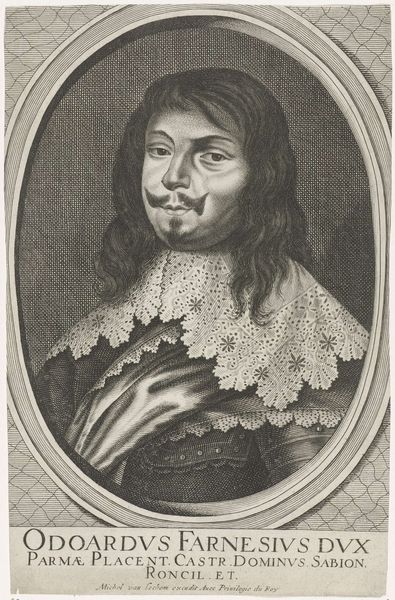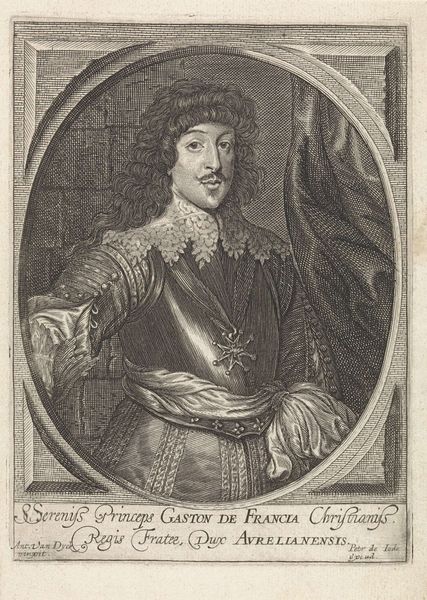
print, metal, engraving
#
portrait
#
baroque
# print
#
metal
#
old engraving style
#
portrait reference
#
portrait drawing
#
history-painting
#
engraving
Dimensions: height 175 mm, width 112 mm
Copyright: Rijks Museum: Open Domain
Curator: Let’s turn our attention to this Baroque print from between 1600 and 1676, located in the Rijksmuseum, a portrait of Charles the Bold by Frederik (I) Bouttats. Editor: There's an immediate somberness in this portrait. The dense lines and shadowing in the engraving lend a weightiness that is only amplified by the detail in his armour and fur collar. It all feels rather weighty, imposing. Curator: Indeed, and I believe it intends to be. This work situates Charles the Bold within a long lineage of rulers. The very act of creating this portrait, centuries after his death, suggests an active attempt to memorialize and even perhaps legitimize a certain set of historical power structures. It serves as a historical record, but also as a piece of political propaganda, really. Editor: I see your point about its political implications, but stepping back from the historical narrative for a moment, the artistic technique itself also contributes to that sense of controlled power. Look at the framing oval—its rigid geometry is in stark contrast to the more organic rendering of his face and clothing. The effect is to contain, to formalize. The gaze, while direct, has a hint of sadness which only serves to enforce his position. Curator: Precisely! The image and associated texts were undoubtedly aimed at a learned audience. It encapsulates a complex visual language designed to convey status and authority and influence their view of his history. Editor: The textures are amazing for an engraving – look at the difference in how metal, fur and hair have been achieved. Even at the print size, you could imagine touching them! The layering adds to that gravity and realism. I wonder what kind of cultural statement such choices could make? Curator: Well, to put it simply, this portrait, like many historical depictions, reminds us that what we see isn’t always a neutral reflection of the past. The choices regarding medium and framing further emphasizes that political power relies significantly on its public image. Editor: It certainly offers much food for thought, both as an aesthetic object and as a historical document!
Comments
No comments
Be the first to comment and join the conversation on the ultimate creative platform.
